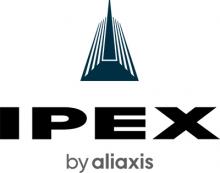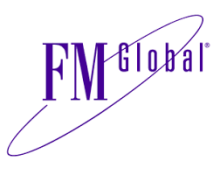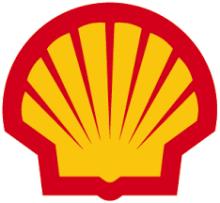57th Annual Loss Prevention Symposium (LPS)
The Loss Prevention Symposium (LPS) is one of several parallel symposia that comprise the Global Congress on Process Safety (GCPS). The purpose of the LPS conference is to present technological advances in process safety, explosion prevention, fire protection and lessons learned from incident investigations. LPS focuses on process safety technology – new developments, cutting-edge solutions, and innovative/novel approaches to hazard identification and risk assessment/management.
Encouraged Topics for this conference include, but not limited to:
- Fires, Explosions, Combustible Dust, and Chemical Reactivity
- Facility Siting, Consequence Analysis, and Risk Assessment
- Traditional Energy Infrastructure Safety
- Alternative Energy Infrastructure Safety
- Engineered Safety System and Mitigation Technologies
- Cybersecurity
- Emergency Planning and Response
- GCPS LNG Safety
- Process Safety in Upstream
- Hydrogen Safety
- Modeling for Risk Quantification
- Case Histories
LPS Chair & Vice Chair:
-
Irfan Shaikh & Manuel Herce, LPS_chair@aiche.org
Session Topic Descriptions:
Fires, Explosions, Combustible Dust, and Chemical Reactivity
The analysis, prevention, protection, and mitigation of fires, explosions, and chemical reactivity hazards has always been important to the loss prevention community. This year the session has been expanded to include explosions caused by combustible dust as well as hydrocarbons and other hazardous materials. Dust explosion safety continues to be an area of interest and development for loss prevention professionals. This technical session invites papers on these process hazards, with a specific focus on new data, novel or cutting-edge approaches related to hazards identification and/or characterization, hazards assessment, and the development of safe designs and/or operational practices to manage the hazards.
Facility Siting, Consequence Analysis, and Risk Assessment
Consequence modeling, quantitative risk assessment techniques, and facility siting analyses are key tools applied by loss prevention professionals to understand and manage risk. Applications for these methodologies include capital projects, on-shore and off-shore facilities, pipelines, transportation, and emergency response. This session seeks papers describing recent advances and novel approaches to facility siting, consequence analysis, and quantitative risk analysis, as well as the integration and application of these tools and techniques into corporate risk assessment. Papers discussing best practices, case studies, and lessons learned are encouraged.
Traditional Energy Infrastructure Safety
Liquid fuels, gaseous fuels, liquefied gaseous fuels, and electricity have historically served as the primary energy sources for society. This session aims to present new developments in safety technology or understanding of the hazards posed by the traditional energy infrastructure. Topics may include technical aspects of infrastructure safety such as trucking and rail transportation; fueling, loading, and unloading stations; transmission and distribution pipelines; and electrical power generation and distribution.
Alternative Energy Infrastructure Safety
Many enterprises are jumping onto the World’s march towards a lower carbon energy future with a wide range of potential solutions that include: Battery technology and Battery Energy Storage Systems (BESS); and biofuels, renewable fuels, lower carbon utilities (solar, wind), geothermal, and Carbon Capture and Sequestration (CCS). Each potential solution will require a combination of existing and/or completely new infrastructure, which comes with a range of known hazards in different environments. As the world moves towards a lower carbon future, it is critical that risks of potential solutions and required infrastructure are identified, evaluated, and properly managed. We are looking for papers that discuss the safety challenges that must be identified, understood, and managed in the rapidly adapting energy landscape.
Engineered Safety System and Mitigation Technologies
Engineered systems are implemented to maintain safe operations and prevent adverse outcomes. Engineered safety systems and other mitigation technologies are diverse in their nature and function and may include mechanical pressure relief systems, automated response systems, execution of operating procedures, or passive mitigation such as drain systems or fire protection. There are two critical aspects of managing engineered safeguards: establishing safeguards based on the relationship between the hazard and its prevention or mitigation which may include design and sizing requirements, and sustaining and assuring safeguards which may include the reliability of performance and maintenance requirements. This session invites speakers to share their knowledge on safeguard stewardship, new applications, best practices, case studies, and lessons learned.
Cybersecurity threats to process control networks are an increasing concern for the oil and gas and chemical process industry, and it is vitally important to address this growing threat in order to protect the technology critical to the safe operations of facilities. Of special interest are threats to automated safeguards for high-risk scenarios. This session will feature technical papers covering cybersecurity threat assessments to digital and automated controls, current and future industry standards, ongoing research, industrial case studies, and approaches to building cyber-resiliency into processing operations.
Emergency Planning and Response
Emergencies can include everything from process safety events (such as fire, explosions, toxic releases etc.), extreme weather events (such as floods, earthquakes), and third-party events (such as sabotage, neighboring facility impacts). Most Emergency Response Plans are based upon a “credible” scenario, but as some of these “incredible” events occA12:A13ur, they become “credible”. Are your plans updated? Emergency response planning starts well before an emergency occurs as some plans may involve prediction, consequence modeling, and mitigation of consequences through inherently safer design considerations, layers of protection, internal and external communications, mustering, evacuation routes, and provisions as well as ways stakeholder engagement in response planning. Topics of interest may include any of those mentioned here.
This session is intended to gather papers related to LNG safety regulations, simulations, experiments, materials, and equipment utilized for LNG plant safety and protection. Topics on vapor dispersion exclusion zones, service life of materials at cryogenic conditions, modeling for LNG plant protection, etc. are of special interest.
This session aims to present new developments in safety technology or understanding of the hazards posed by onshore and offshore upstream developments. Topics may include technical aspects of offshore infrastructure safety such as ship bunkering and collision hazards, helicopter transportation to offshore facilities, escape, egress and evacuation (EER), dropped objects, essential equipment survivability, remote facilities, marine stability, blowout prevention, and simultaneous operations (such as with drilling or construction during operations).
Hydrogen has the promise of a lower carbon future that includes energy applications such as power generation, energy storage, pipelines, and transport. Hydrogen development will require a combination of existing and/or completely new infrastructure. It is critical that risks of potential hydrogen application solutions and required infrastructure are identified, evaluated, and properly managed. We are looking for papers that discuss safety challenges in hydrogen application that must be identified, understood, and managed in the rapidly adapting energy landscape.
Modeling for Risk Quantification
The objective of this session is to raise awareness of opportunities to improve hazard identification, consequence prediction, and risk mitigation through the application of existing and emerging modeling techniques. This session will serve as a venue for process safety engineers and modelers to discuss available tools, their capabilities, and application examples as well as to identify problems that would benefit from new model development and application. Submissions are welcome in areas including but not limited to steady-state and dynamic process modeling, kinetics and reactor modeling, dispersion analysis, computational fluid dynamics (CFD), finite element analysis (FEA), and data analytics.
Back to Top
GCPS Joint Session: Case Histories
Reviews of process safety incidents provide valuable learning opportunities. This session invites papers to help understand the causes and lessons learned from incidents in the industry with an emphasis on events that have helped define and develop the process safety field over the years.















